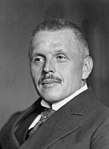1935 Weranian federal election
| |||||||||||||||||||||||||||||||||||||||||||||||||||||||||||||||||||||||||||||||||||||||||||||
All 584 seats to the House of Deputies 292 seats are needed for a majority in the Volkstag | |||||||||||||||||||||||||||||||||||||||||||||||||||||||||||||||||||||||||||||||||||||||||||||
|---|---|---|---|---|---|---|---|---|---|---|---|---|---|---|---|---|---|---|---|---|---|---|---|---|---|---|---|---|---|---|---|---|---|---|---|---|---|---|---|---|---|---|---|---|---|---|---|---|---|---|---|---|---|---|---|---|---|---|---|---|---|---|---|---|---|---|---|---|---|---|---|---|---|---|---|---|---|---|---|---|---|---|---|---|---|---|---|---|---|---|---|---|---|
| Turnout | 16,470,368 (83.71%) | ||||||||||||||||||||||||||||||||||||||||||||||||||||||||||||||||||||||||||||||||||||||||||||
| |||||||||||||||||||||||||||||||||||||||||||||||||||||||||||||||||||||||||||||||||||||||||||||
| |||||||||||||||||||||||||||||||||||||||||||||||||||||||||||||||||||||||||||||||||||||||||||||
The 22nd federal election was held in the Weranian Confederation for the House of Deputies (the lower house of the Bundestag) on the 17th April 1935. All 584 members of the House of Deputies were elected under a system of proportional representation with each regierungsbezirke treated as an electoral districts. The elections were the first held in almost a decade as elections had been suspended during the Great War.
The first election held under universal suffrage (with women being granted the vote five months prior to the election) the 1935 election saw the wartime coalition of the Catholic, National Liberals, Social Democrats, Radicals and Conservatives (the landsmann union) under premier Otto Röttgen splinter on the issue of post-war reconstruction. In particular the Radicals opposed the Leopoldist programme of premier Röttgen with the radicals accusing Röttgen and Leopold IV of attempting to create a dictatorship. Nevertheless Röttgen was popular due to his wartime leadership and aimed to secure a firm mandate to implement post-war reforms.
The wartime abolition of Ruttish parties meant that this was the first Weranian election in decades contested purely by federal parties. The abolition of Ruttish parties and the increased influence of the leftists in Euclea benefitted the Weranic Section of the Workers' International. The OSAI supported the notion of entering the government for the first time since its split in 1920 but refused to cooperate with Röttgen.
The election saw a swing to the left with the OSAI retaining its status as the largest party in the House of Deputies increasing its seat and vote share. Nevertheless the KSP saw the largest increase in both seats and vote consolidating its status as the largest non-socialist party. The election saw the left bloc of the OSAI, SPO and Radicals attain a majority but the SPO refused to work with the OSAI due to continued tensions between the two parties. As such Röttgen formed a centrist cabinet predominantly made of KSP and NLP parliamentarians with support from the SPO and OKP. The centrist coalition would continue to hold office during the legislative term under Röttgen's successor Walther von Pittermann.
Electoral process
The election was held using a system of proportional repsentation that had been introduced in 1905. The country had 78 electoral districts based on the regierungsbezirke with no electoral threshold. There were calls to amend the electoral system prior to the election as it had consistently delivered heavily divided legislatures in the period leading up to the Great War that struggled to produce majority governments - however a proposal to introduce a two-round system was rejected by the cabinet.
The government introduced several changes prior to the election however. The seats in the chamber were reduced from 621 to 584, making a majority in the chamber 293 deputies. The government also passed women's suffrage granting women the right to vote for the first time in Weranian history. The measure was the result of rare cooperation between the Catholics and socialists who were seen as the most likely beneficiaries. In addition the voting age was lowered from 25 to 20.
Background
Parties
| Affiliation | Party | Ideology | Political position | Spitzenkandidat | 1925 result | In government | ||
|---|---|---|---|---|---|---|---|---|
| Left | Weranic Section of the Workers' International | Socialism, Revolutionary socialism | Left-wing | Aurimas Kreickamas | 164 / 621
|
|||
| Centre-left | 
|
Social Democratic Party of Werania | Social democracy, Reformism | Centre-left | Gustav Kroetz | 58 / 621
|
||

|
Radical Party | Radicalism, Anti-clericalism | Centre | Antonin Brausewetter | 54 / 621
|
|||
| Centre-right | 
|
Catholic Social Party | Political Catholicism, Sotirian Democracy | Centre-right | Otto Röttgen | 129 / 621
|
||
| National Liberal Party | National Liberalism, Classical liberalism | Centre-right | Gustav von Blumentritt | 66 / 621
|
||||
| Right | 
|
Weranian Conservative Party | National conservatism, Monarchism | Right-wing | Karl Theophil von Pölten | 55 / 621
|
||
Campaign
Results
| Party | Votes | % | Seats | +/− | |
|---|---|---|---|---|---|
| Weranic Section of the Workers' International | 5,048,372 | 30.65 | 183 | +19 | |
| Catholic Social Party | 4,596,028 | 27.90 | 167 | +38 | |
| Social Democratic Party of Werania | 1,859,570 | 11.29 | 67 | +9 | |
| National Liberal Party | 1,675,936 | 10.18 | 60 | −6 | |
| Radical Party | 1,658,302 | 10.07 | 60 | +6 | |
| Weranian Conservative Party | 1,295,843 | 7.87 | 47 | −8 | |
| Others | 115,832 | 0.70 | 0 | - | |
| Invalid/blank votes | 220,485 | – | – | – | |
| Total | 16,470,368 | 100 | 584 | ±0 | |
| Registered voters/turnout | 19,675,832 | 83.71 | – | – | |






